
Ashton Rediscovered: masterclass with Sir Anthony Dowell on Frederick Ashton’s choreography for Le Rossignol (The Nightingale) 1981.
The Royal Ballet School
19 November 2017.
www.frederickashton.org.uk.

© Anthony Crickmay/ V&A Images/ Victoria and Albert Museum
The masterclass on Le Rossignol was introduced by Jane Pritchard, Curator of Dance at the Victoria and Albert Museum. She announced that the session was dedicated to the memory of David Vaughan, who died in New York on 27 October 2017. He was the author of Frederick Ashton and his Ballets (1976), from which he compiled the Ashton Archive. He was also the archivist of the Merce Cunningham Dance Company, as well as being a respected writer on dance.
Le Rossignol is a relatively obscure opera in three acts by Igor Stravinsky, first performed by Diaghilev’s Ballets Russes in Paris and London in 1914, just before the First World War. Stravinsky’s original commission had been paid by a theatre that went bankrupt, so Diaghilev was able to have the premiere for free. The designs were by Alexandre Benois, the choreography by Boris Romanov, at that stage a young character dancer who went on to have a long career as a choreographer. (Fokine, it seems, was too busy in 1914.) Little mention was made of the staging in contemporary accounts, since Le Rossignol was overshadowed by more substantial operas and ballets in the Ballets Russes season.
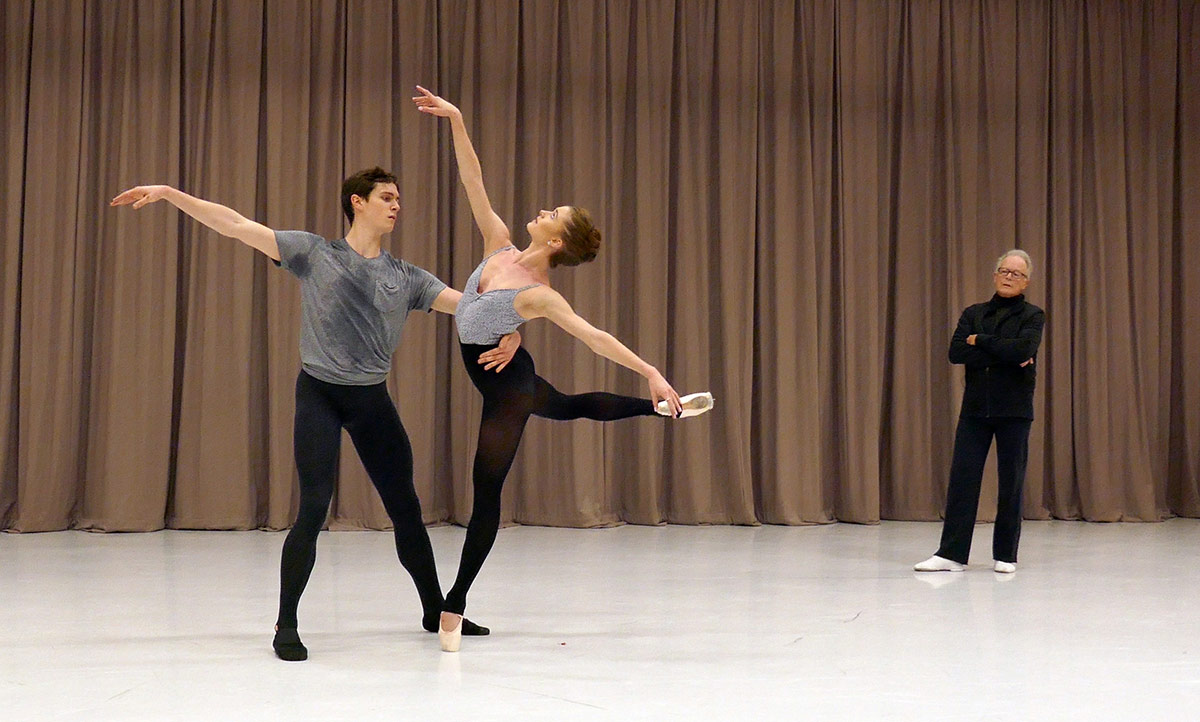
© Rachel Thomas. (Click image for larger version)
The Metropolitan Opera in New York staged Le Rossignol in December 1981 as part of a programme commemorating the hundredth anniversary of Stravinsky’s birth (1882-1979). The other two works were Le Sacre du printemps and his opera Oedipus. All the designs were by David Hockney, and the producer of the triple bill was another Englishman, John Dexter. He told Ashton, back in London, that he could choreograph two dancers as the Nightingale and the Fisherman on stage, while the roles would be sung by opera singers in the orchestra pit.
The story is based on a Hans Christian Andersen tale about an Chinese Emperor who is at first enchanted by a nightingale’s song, but then prefers a mechanical bird presented to him by Japanese emissaries. The mechanism goes wrong and the emperor is near death until the real nightingale returns to sing to him every night. In act I, the fisherman hears the bird’s song and captures the nightingale to take it to court. Ashton choreographed a solo for Anthony Dowell as the Chinese fisherman and a pas de deux with Natalia Makarova as the nightingale.
Ashton was too busy mounting Les Illuminations for the Royal Ballet to travel to New York, so he created the choreography for Le Rossignol in London at the Royal Ballet studios in Baron’s Court. Dina Makarova, Natalia’s assistant and photographer, filmed the result, and they took a cassette to show to Dexter in New York before the production. Dowell told the masterclass audience that he found his copy of the cassette only recently at the back of a cupboard.
Benesh notator Lorraine Gregory prepared a script of the choreography from the blurry film record and taught it to William Bracewell and Anna Rose O’Sullivan, with the assistance of Gary Avis as ballet master. Dowell said that, without their help, he could have remembered only a few details of his performances at the Met in 1981 and at the Royal Opera House in 1983. The same production was remounted at the ROH in a double bill with Ravel’s L’enfant et les sortilèges, also from the Met, with designs by Hockney. (I saw the double bill then.)
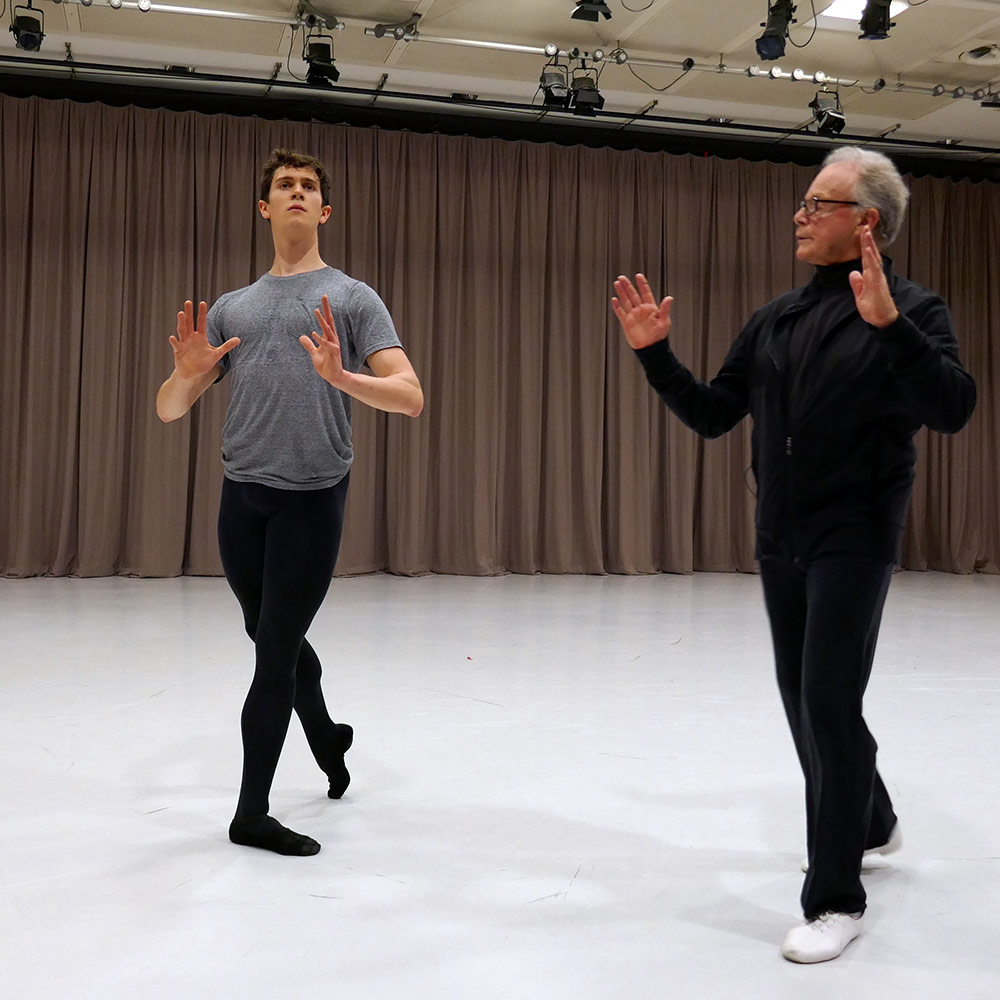
© Rachel Thomas. (Click image for larger version)
The masterclass started with the Fisherman’s solo after he awakens by the riverbank. Dowell pointed out that the repeated arabesque with both arms extended together is the Fisherman casting his rod into the water. Bracewell, who joined the Royal Ballet as a soloist this year from Birmingham Royal Ballet, has an elegant arabesque line similar to Dowell’s – and a similar ease in accomplishing multiple pirouettes. The solo indicates that the Fisherman is both pure of heart and of peasant stock. He lilts on his heels, turns his legs in and out, slaps his feet and flicks his fingers. There are discreet touches of chinoiserie in his curling wrists and bent elbows, and a typically Ashtonian twist of his shoulders as he changes direction.
When the film of Dowell dancing was shown at the end of the session, it became clear how closely the choreographic phrases responded to the orchestral music and the singing voice – not so evident in the piano reduction, played sympathetically during the masterclass by Michael Pansters.
When Anna Rose O’Sullivan joined in for the pas de deux, we were told that, at the start, the Nightingale was lifted out of a wooden tree by the Fisherman. A Makarova anecdote had it that at one performance, the tree entered without her, while she improvised an entrance, waving her arms. Vaughan recorded in Dance Now magazine (autumn 1994) that Makarova missed one performance and Dowell successfully suggested her presence in mime (maybe the same anecdote). Vaughan thought that her presence was unnecessary: ‘The whole point of the story is that a nondescript little grey bird sings a song of unearthly beauty. We don’t need to have her personified…. Dowell could make us see her and Stravinsky could do the rest.’

© Rachel Thomas. (Click image for larger version)
I remember, however, Makarova looking exquisite as a seemingly weightless vision – not a fierce Firebird or a tragic Swan Queen, but a delicate mythical being. She wore simple bodytights with almost abstract markings suggesting feathers. O’Sullivan and Bracewell revealed just how intimate the partnering is in the section of the pas de deux we saw. She leans back into him, lets him put his head on her breast as she arches away, then pushes him from her as the music becomes more urgent. He swirls her around him, off-balance on pointe, before lifting her as though he’s trying to hold onto her as she flies away. It never looks as though she’s being manipulated, a testament to the skill of the two young soloists who had very little preparation time for the masterclass.
Dowell commented that by the time of Le Rossignol, he had already partnered the famously unpredictable Makarova in many ballets, from Giselle and Swan Lake to Manon, so they were well used to each other. Bracewell and O’Sullivan, far less experienced, seem remarkably well suited. Dowell was obviously pleased with what they had achieved in reconstructing his role and Makarova’s.
Tantalisingly, we are unlikely to see Le Rossignol remounted by the Royal Opera in Ashton’s choreography in the near future, unless it could be taken on as a project in the renovated Linbury Studio. But at least some of the choreography has now been preserved in notation and on film for the Ashton archives – and possible revivals.










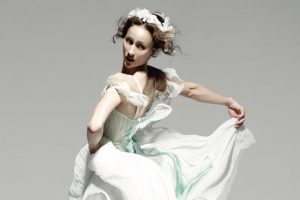

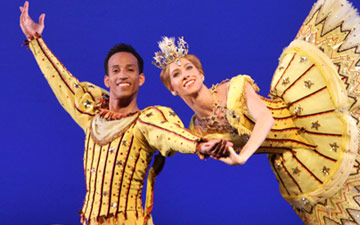
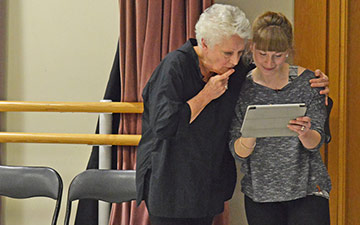

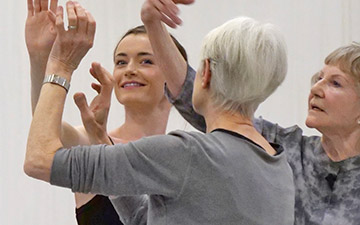

You must be logged in to post a comment.